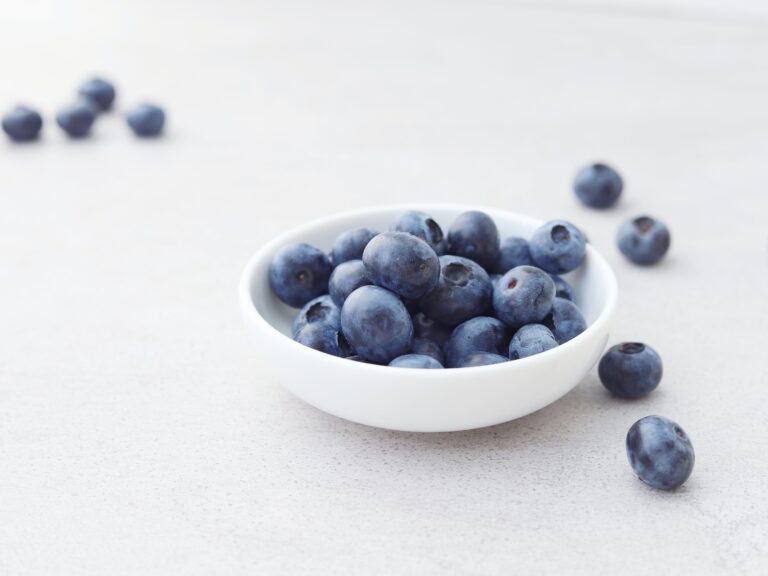
Berries (particularly blueberries) and other selected whole foods contain polyphenols. But what are polyphenols and how does it affect our health? Allow me to geek out on food chemistry for a second.
Polyphenols are micronutrients that we get through certain plant-based foods. They’re packed with antioxidants and provide potential health benefits like improving digestion, weight management, diabetes, neurodegenerative disease, and cardiovascular diseases.
Berries are rich in polyphenols. These include popular and easily accessible berries like blueberries (560 mg polyphenols), blackberries (260 mg polyphenols) strawberries (235 mg polyphenols) and red raspberries (215 mg polyphenols).
Other whole foods rich in polyphenols include:
cocoa powder
dark chocolate
black tea
green tea
red wine
nuts
beans
cloves
other seasonings like dried peppermint and star anise.
In summary, polyphenols are powerful micronutrients that our body needs. It’s best to consume polyphenols through foods naturally containing them, instead of through artificially made supplements, which may come with more side effects. If you take supplements, make sure they are made from a reputable company with high-quality sourcing. ⠀⠀⠀⠀
Here’s a delicious breakfast (or snack) recipe you can try! Add as many polyphenol rich foods from the list mentioned above and make it your own. If you make it don’t forget to tag me on Instagram
Farro, Almond & Berrie Breakfast Cereal
*Farro is high-protein, high-fiber wheat grain that looks similar to barley or brown rice and has a nutty taste.*
Ingredients
½ cup whole-grain farro
1 cup unsweetened almond milk
¼ teaspoon salt
¼ teaspoon vanilla extract
Dash ground cinnamon
½ cup fresh berries of choice
¼ cup whole raw almonds
1 tablespoon maple syrup
¼ teaspoon finely shredded lemon peel
Instructions
Soak the farro in water overnight then drain and rinse.
In a small saucepan, combine milk, salt, vanilla and cinnamon. Bring to boiling. Stir in farro; reduce heat. Simmer, covered, 20 minutes or until farro is tender.
Stir in the berries, almonds (leave some to use as a garnish), the maple syrup and lemon peel. Cover and let stand 3-4min, or until the berries are warm. Distribute into serving dishes and top with more almonds and fresh berries (optional).
Similar Link: Healthy Gluten Free Blueberry Muffins
If you would like more recipes like this, CLICK HERE to get my FREE Recipe Book!
VERSIÓN EN ESPAÑOL
Por qué debes incluir más bayas (berries) a tu dieta!

Las bayas o “berries” en ingles (particularmente los arándanos) y otros alimentos integrales seleccionados contienen polifenoles. Pero, ¿qué son los polifenoles y cómo afectan a nuestra salud? Permíteme que me dedique un segundo a la química de los alimentos.
Los polifenoles son micronutrientes que obtenemos a través de ciertos alimentos de origen vegetal. Están repletos de antioxidantes y brindan posibles beneficios para la salud, como mejorar la digestión, las dificultades para controlar el peso, la diabetes, las enfermedades neurodegenerativas y las enfermedades cardiovasculares.
Las bayas son ricas en polifenoles. Estos incluyen bayas populares y de fácil acceso como arándanos (560 mg de polifenoles), moras (260 mg de polifenoles), fresas (235 mg de polifenoles) y frambuesas rojas (215 mg de polifenoles).
Otros alimentos integrales ricos en polifenoles incluyen:
cacao en polvo
chocolate negro
té negro
té verde
vino tinto
nueces
rijoles
clavos
y otros condimentos como la menta seca y anís estrellado.
En resumen, los polifenoles son potentes micronutrientes que nuestro organismo necesita. Es mejor consumir polifenoles a través de alimentos que los contengan de forma natural, en lugar de a través de suplementos elaborados artificialmente, que pueden tener efectos secundarios. Si toma suplementos, asegúrese de que estén elaborados por una empresa de renombre con un abastecimiento de alta calidad. ⠀⠀⠀⠀⠀
¡Comparto una deliciosa receta de desayuno (o merienda) que puedes probar! Puedes agregar alimentos ricos en polifenoles de la lista mencionada anteriormente y hágalo suyo. Si lo logras, no olvides etiquetarme en Instagram.
Cereal de desayuno hecho con farro, almedras & bayas
* el farro es un grano de trigo rico en proteínas y fibra que se parece a la cebada o al arroz integral y tiene un sabor a nuez.
Ingredientes
½ taza de farro integral
1 taza de leche de almendras sin azúcar
¼ de cucharadita de sal
¼ de cucharadita de extracto de vainilla
Una pizca de canela molida
½ taza de bayas frescas de su elección
¼ de taza de almendras crudas enteras
1 cucharada de jarabe de arce (maple syrup)
¼ de cucharadita de cáscara de limón finamente rallada
Instrucciones
Remojar el farro en agua durante la noche, luego escurrir y enjuagar.
En una olla pequeña, combine la leche, la sal, la vainilla y la canela. Llevar a ebullición. Agregue el farro; reducir el calor. Cocine a fuego lento, tapado, 20 minutos o hasta que el farro esté tierno.
Agregue las bayas, las almendras (deje un poco para usar como guarnición), el jarabe de arce y la piel de limón. Cubra y deje reposar 3-4min, o hasta que las bayas est
Enlaces similares –Muffins de Arándanos Saludables sin Gluten
